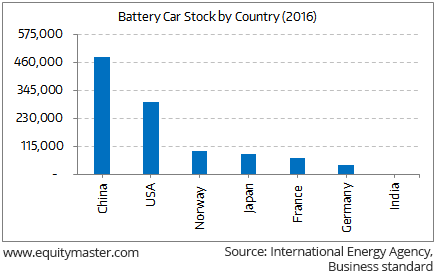- Home
- Todays Market
- Indian Stock Market News November 24, 2017
Sensex Ends Day in Green; Consumer Durables Stocks Top Gainers Fri, 24 Nov Closing
After opening the day in green, share markets in India witnessed buying activity throughout the day and ended the day on a positive note. Gains were seen across most sectors with stocks in the consumer durables sector and stocks in the IT sector, leading the gains.
At the closing bell, the BSE Sensex stood higher by 91 points (up 0.3%) and the NSE Nifty closed up by 41 points (up 0.4%). The BSE Mid Cap index ended the day up by 0.6%, while the BSE Small Cap index ended the day up by 0.5%.
Asian stock markets finished in green. As of the most recent closing prices, the Hang Seng was up by 0.6% and the Shanghai Composite was flat. The Nikkei 225 was up by 0.1%. European markets mixed. The FTSE 100 was down by 0.3%. The DAX was higher by 0.1% while the CAC 40 was up by 0.3%.
The rupee was trading at Rs 64.72 against the US$ in the afternoon session. Oil prices were trading at US$ 58.59 at the time of writing.
In news from the automobile sector. As per a survey by the Society of Manufacturers of Electric Vehicles (SMEV) Gujarat, West Bengal, Uttar Pradesh, Rajasthan and Maharashtra have emerged as the top 5 states in electric vehicle sales in the last financial year.
An SMEV survey of electric vehicles (EVs) sold during the last fiscal showed that 1,926 of these were sold in Maharashtra, 2,388 in Rajasthan, 2,467 in Uttar Pradesh, 2,846 in West Bengal and 4,330 in Gujarat, which made it the to the top in bringing the maximum number of e-vehicles on road.
Of all the EVs sold, 92% were two-wheelers and only 8% were four-wheelers.
Currently, electric vehicle sales are low in India, rising 37.5% to 22,000 units in the year ended 31 March 2016 from 16,000 in 2014-15. Only 2,000 of these were cars and other four-wheelers, according to automobile lobby group Society of Indian Automobile Manufacturers (Siam).
The government wants to see 6 million electric and hybrid vehicles on Indian roads by 2020 under the National Electric Mobility Mission Plan 2020.
Is India Prepared to Meet the Ambitious Battery Car Target?
The government is targeting to have all cars propelled by electric engine by 2030. The target is more daunting than in many advanced countries.
According to the industry, the 2030 target would require eight to ten times the global stock of such vehicles. India would need to sell more than 10 million electric cars in 2030, compared to 5,000 electric vehicles India had on the road in 2016.
As you can see from the chart, India is barely visible compared to other developed countries when it comes to battery cars.
Just Released: Multibagger Stocks Guide
(2018 Edition)
In this report, we reveal four proven strategies to picking multibagger stocks.
Well over a million copies of this report have already been claimed over the years.
Go ahead, grab your copy today. It's Free.

As an article in Business Standard suggests, such a big jump in scale for the auto industry in 13 years seems difficult. The basic infrastructure is missing. There are not enough charging stations. For this massive shift, the charging stations will need to be as ubiquitous as petrol pumps.
Another issue is the price of the lithium ion battery, which constitutes 30% to 40% of the cost of the car. For this plan to succeed, the price of the battery needs to come down.
The auto industry is already facing regulatory headwinds. The shift from BS-IV emission norms to BS-VI has been two years ahead of schedule without an intermediate stage. The government, if it is serious about such ambitious targets, should offer the necessary infrastructure support and do its bit for a smooth transition.
Moving on to news about the economy. Ratings agency, HYPERLINK "https://www.equitymaster.com/share-price/CRISIL/CRISIL-500092/CRISIL-Share-Price" Crisil Ratings in its latest report has said that in India bank credit to the micro, small and medium enterprises (MSME) sector, whose current market size is estimated at around Rs trillion, is likely to expand at 11% compound annual growth rate (CAGR) over the next two financial years. It added that this is way faster than the 7% anticipated growth in bank credit to India Inc.
The rating agency said that over the past five fiscals ending 2017, non-banking finance companies recorded a four-fold increase in their credit book to MSMEs. Consequently, their cumulative market share in MSME financing rose to 18% in fiscal 2017 from 8% five years ago. It added that this will rise to over 20% in two years.
Lenders have been trying to protect their return on assets by focusing on smaller loans, where yields are higher, and on unsecured loans. For NBFCs, unsecured loans account for 20% of the MSME portfolio as of March 2017. However, the report noted that while competition has intensified and asset quality has weakened, the overall opportunity remains compelling, given the huge under-penetration of formal finance in the MSME segment. Moreover, structural changes such as the goods and services tax will increase transparency in MSME financials.
It also said the competitiveness of MSMEs would be determined by the extent of tax avoidance, their position in the value chain, labour cost arbitrage, product offering, local market knowledge and proximity to customer.
For information on how to pick stocks that have the potential to deliver big returns, download our special report now!
Read the latest Market Commentary



Equitymaster requests your view! Post a comment on "Sensex Ends Day in Green; Consumer Durables Stocks Top Gainers". Click here!
Comments are moderated by Equitymaster, in accordance with the Terms of Use, and may not appear
on this article until they have been reviewed and deemed appropriate for posting.
In the meantime, you may want to share this article with your friends!